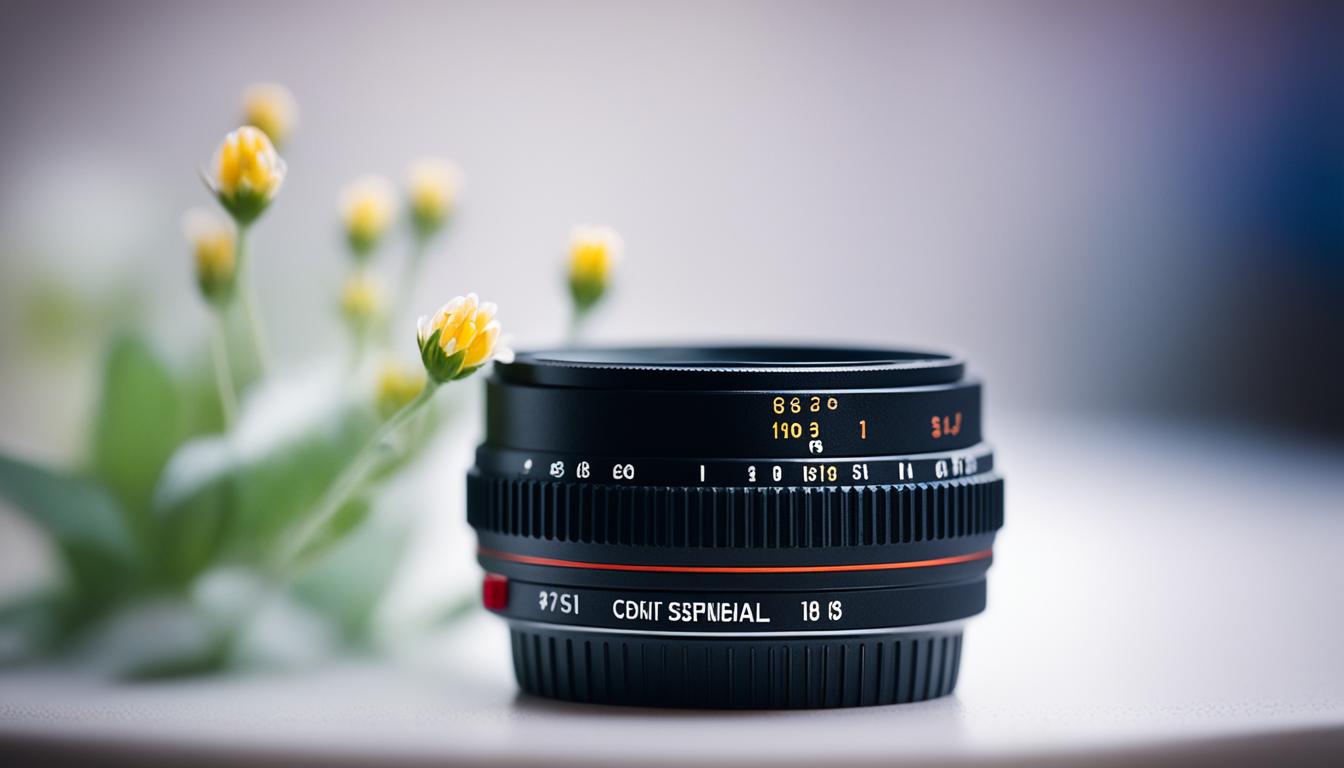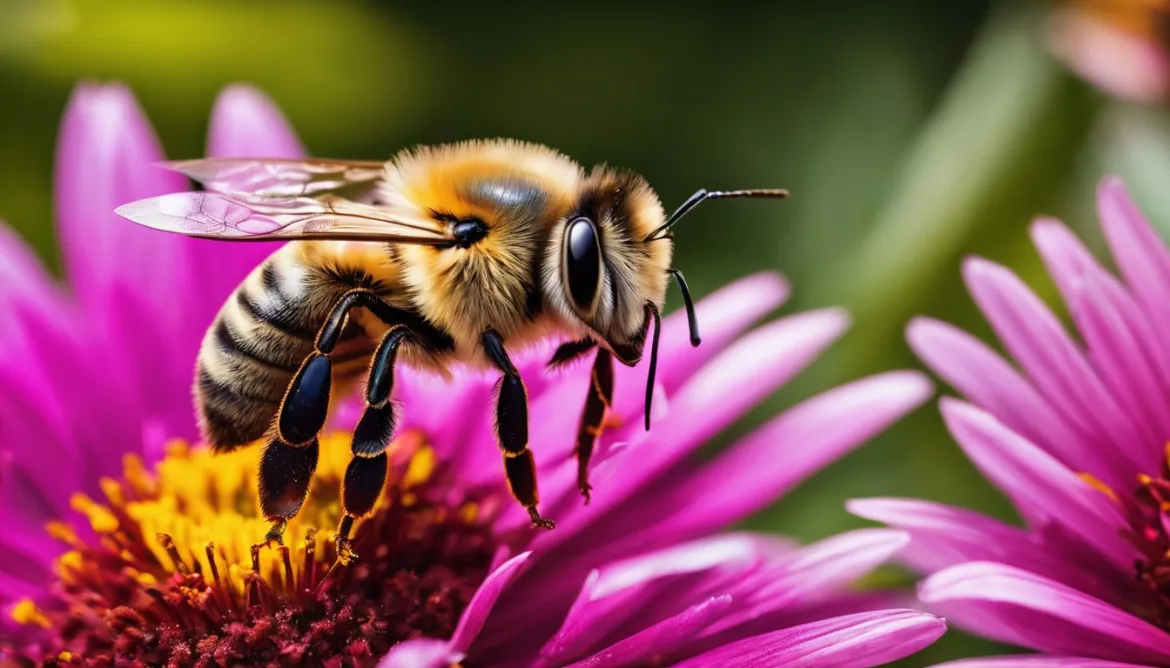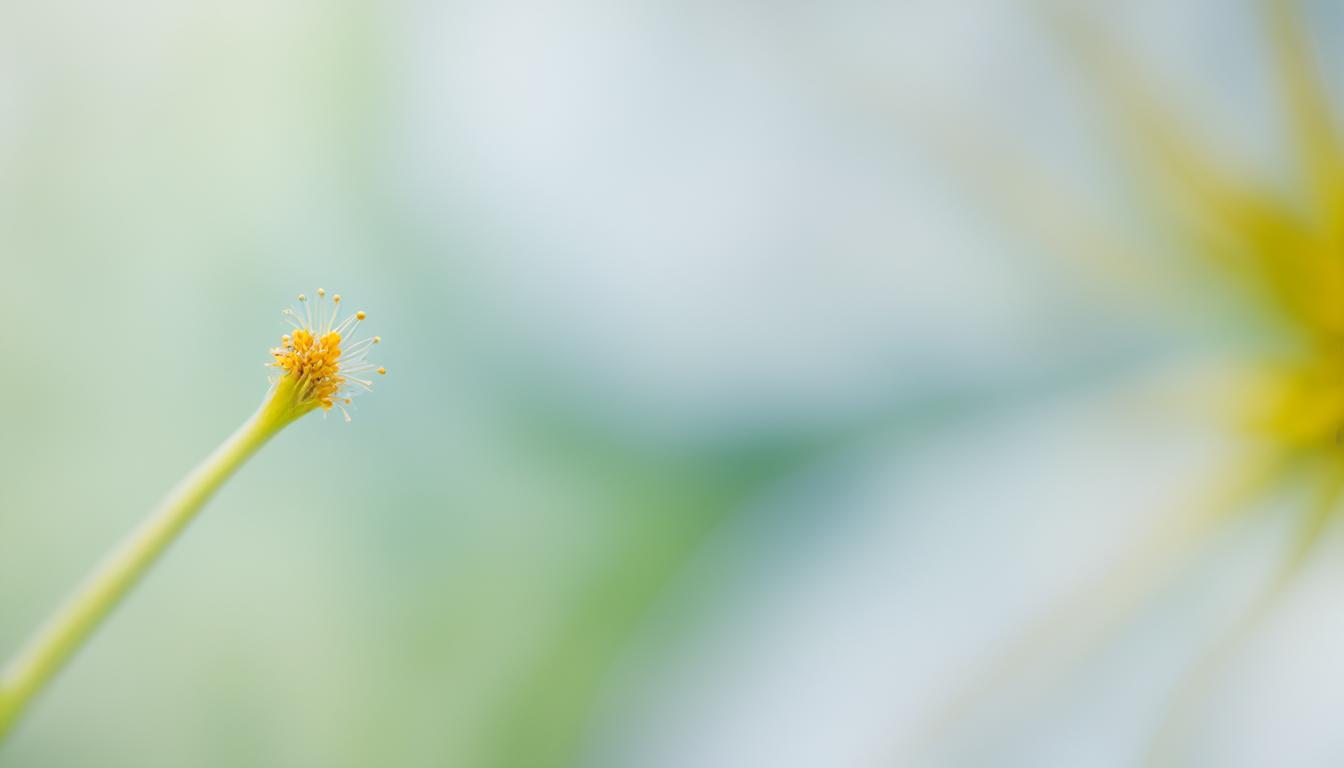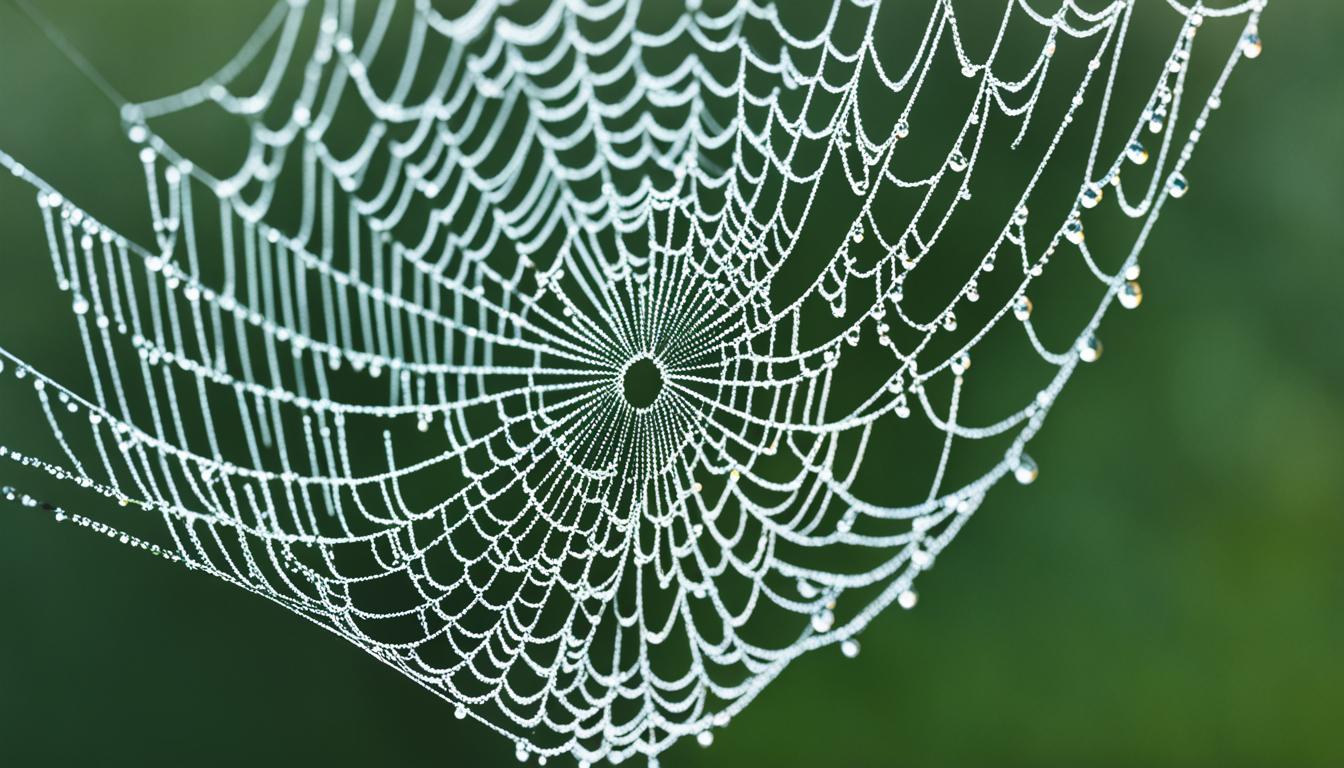Welcome to our comprehensive guide on macro photography composition and framing techniques. In this article, we will explore the art of capturing stunning macro shots with precision and creativity. Whether you are new to macro photography or looking to enhance your skills, these guidelines and tips will help you create captivating close-up photos.
Key Takeaways:
- Mastering composition is crucial for creating impactful macro shots.
- Consider the point of view and lead room to create a connection with your subject.
- Apply the rule of thirds for visually balanced and aesthetically pleasing compositions.
- Utilize symmetry to add boldness and impact to your macro photos.
- Experiment with filling the frame to capture intricate details and create powerful compositions.
The Importance of Composition in Macro Photography
Composition plays a vital role in photography, and macro photography is no exception. While it’s tempting to focus on gear and technical details, the framing of your subject is what truly makes an image captivating. Careful attention to composition is essential for creating visually pleasing macro shots.
When it comes to macro photography, composition refers to the arrangement of elements within the frame. It involves making deliberate choices about what to include and exclude, how to position the main subject, and how to utilize negative space and leading lines.
By skillfully composing your macro shots, you can guide the viewer’s eye, convey a particular mood or story, and enhance the visual impact of your images. A well-composed photograph captivates the viewer and evokes emotions.
When considering composition in macro photography, it’s important to remember that every element within the frame contributes to the overall composition. From the main subject to the background, each component should work together harmoniously to create a balanced and visually compelling image.
Composition Techniques for Macro Photography
There are several composition techniques that can elevate your macro photography to the next level. Let’s explore some of them:
- Rule of Thirds: The rule of thirds is a fundamental guideline that suggests dividing the frame into nine equal parts using two horizontal and two vertical lines. By placing the main subject along these lines or at the intersection points, you can create a visually balanced composition. However, it’s important to remember that rules are made to be broken, and centering the subject can also result in a striking image.
- Utilizing Negative Space: Negative space refers to the empty areas in a photo. In macro photography, strategic use of negative space can draw attention to the main subject and create a strong focal point. By leaving empty spaces around the subject, you can simplify the composition and make the subject more powerful.
- Leading Lines: Leading lines are lines within a photo that guide the viewer’s eyes towards the main subject. Incorporating leading lines, such as flower stems or other natural elements, creates a visual path that directs attention to the focal point of the image. Leading lines add depth and a sense of movement to macro compositions, making them visually engaging.
By employing these techniques and experimenting with different composition strategies, you can enhance the impact of your macro photos. Remember, composition is a creative tool that allows you to communicate your vision and connect with your audience on a deeper level.
The image below demonstrates the importance of composition in macro photography:
| Technique | Description |
|---|---|
| Rule of Thirds | Analyze the frame and position the main subject along the imaginary lines that divide the frame into thirds, vertically and horizontally. |
| Utilizing Negative Space | Strategically incorporate empty areas around the subject to draw attention and create a strong focal point. |
| Leading Lines | Use natural or created lines to guide the viewer’s eyes towards the main subject, adding depth and movement to the composition. |
Point of View and Lead Room
In macro photography, the point of view and lead room are critical factors to consider in order to create compelling images. When we shoot from the same vantage point as our subject, it establishes a sense of intimacy and connection, allowing us to capture their intricacies in a more personal way. This perspective draws the viewer’s attention to the subject’s unique features and details, making the photograph more engaging.
Additionally, lead room plays a significant role in macro photography composition. It refers to the extra space in the frame where the subject is looking or moving towards. By including adequate lead room, we create a sense of balance and visual interest in the image. The additional space provides room for the subject to “breathe” and gives the viewer a sense of direction or movement. This technique enhances the overall composition and adds depth to our macro shots.
When utilizing point of view and lead room in macro photography, we have the opportunity to evoke emotion and tell a story through our images. Experimentation with different perspectives and compositional elements will elevate your macro photographs to new heights.

Example:
“The best macro photographs are often created when the photographer becomes one with the subject. Shooting from the same vantage point establishes a connection, allowing you to capture incredible details and textures. Remember to leave room for the subject to breathe and move within the frame, adding a dynamic element to your compositions. This combination of point of view and lead room will make your macro photographs truly captivating.”
Macro Photography Point of View and Lead Room Tips:
- Get on the same level as your subject for an intimate and immersive perspective.
- Experiment with different angles to find the most visually appealing point of view.
- Include lead room in your compositions to create a sense of balance and movement.
- Consider the subject’s direction of movement or gaze when positioning the lead room.
- Practice patience and observation to capture the perfect moment that showcases the subject’s personality.
Rule of Thirds in Macro Photography
In macro photography, one of the fundamental composition guidelines is the rule of thirds. This guideline applies to macro shots just as it does to other types of photography. By following the rule of thirds, you can create visually balanced and aesthetically pleasing compositions.
The rule of thirds suggests dividing the frame into imaginary lines that form a grid of nine equal parts. The main subject should then be positioned along these lines or at the points where they intersect. Placing the subject off-center creates a more dynamic and engaging composition. It adds visual interest and allows the viewer’s eyes to naturally explore the image.
Take a look at the following example:
In this image, the subject, a vibrant flower, is placed along the right vertical line of the grid. This positioning creates a sense of balance and harmony in the composition. The negative space on the left provides breathing room and enhances the visual impact of the subject.
While the rule of thirds is a valuable guideline, remember that rules are made to be broken in art. In some situations, centering the subject can create a powerful and striking composition. Experimentation and creative exploration are essential in finding your own unique style and breaking free from rules.
Symmetry as a Composition Technique
When it comes to creating bold and impactful macro photos, symmetry is a powerful composition technique that should not be overlooked. By incorporating symmetry into your compositions, you can add a dynamic and visually appealing element to your macro images.
When a subject exhibits clear symmetry, centering it in the frame can enhance the visual impact and draw the viewer’s attention. One common subject in macro photography that lends itself well to symmetry is flowers. The natural patterns and structures found in flowers can create stunning symmetric compositions that are both pleasing to the eye and captivating.
Take a look at the image below to see an example of how symmetry can be utilized in macro photography:
Here, the symmetrical layout of the flower petals creates a visually striking composition. The repetition of shapes and patterns on either side of the frame adds balance and harmony to the image.
When incorporating symmetry into your macro compositions, it’s essential to pay attention to the placement and alignment of the subject. Take the time to experiment with different angles and perspectives to find the most visually pleasing composition. Don’t be afraid to get up close and personal with your subject to capture every intricate detail and symmetry.
Remember, symmetry is just one of the many composition techniques you can use in macro photography to create visually captivating images. By combining different composition techniques and experimenting with your unique style, you can elevate your macro photography and create stunning works of art.
Filling the Frame with the Subject
In macro photography, filling the frame with your subject is a technique that can create a strong visual impact. By getting close and magnifying your subject, you can capture intricate details and create powerful compositions. It allows you to showcase the beauty and complexity of small subjects in a way that is often overlooked in our everyday lives.
When using this technique, it’s important to ensure that the background doesn’t distract from the subject. By keeping the background simple or out of focus, you can draw all the attention to the subject and create a visually pleasing image. Remember, the subject should be the star of the show!

While filling the frame with the subject, pay attention to the composition and ensure that there is still something of interest within the frame. It could be a vibrant flower petal, an intricate pattern, or a striking texture. This additional element will complement and enhance the main subject, creating a more engaging and well-rounded image.
Filling the frame with the subject is an effective technique to capture the viewer’s attention and create a strong emotional connection. It allows us to appreciate the intricate details that often go unnoticed in our daily lives. By focusing on what truly matters, we can showcase the beauty and uniqueness of even the smallest subjects.
Macro Photography Tips for Filling the Frame:
- Get close to your subject to capture fine details.
- Ensure that the background doesn’t distract from the subject.
- Include an additional element of interest within the frame.
- Experiment with different angles and perspectives to find the most impactful composition.
- Pay attention to lighting and focus to highlight the subject’s details.
Benefits of Filling the Frame:
| Benefit | Description |
|---|---|
| Highlighting Details | By filling the frame, you can showcase the intricate details of your subject, allowing viewers to appreciate the beauty and complexity up close. |
| Creating Impact | A close-up composition can create a powerful visual impact, drawing the viewer’s attention and evoking emotional responses. |
| Eliminating Distractions | By eliminating unnecessary elements from the frame, you can create a cleaner and more focused image that highlights the subject. |
| Injecting Intimacy | Filling the frame allows you to create a sense of intimacy and connection with your subject, inviting viewers to step into a fascinating world. |
Choosing a Supportive Background
When it comes to macro photography, the background you choose can significantly impact the overall composition of your image. A supportive background serves the purpose of complementing your subject and emphasizing its presence. By carefully selecting and experimenting with different background options, you can add depth and visual interest to your macro photos.
One effective technique for creating a supportive background is to opt for a uniform backdrop. This can be achieved by using a solid color backdrop or creating a blurred background through a wide aperture. A solid color background can help make your subject stand out and create a clean and minimalist look. On the other hand, a blurred background adds a sense of depth to your composition, isolating the subject and drawing the viewer’s attention to it.
In this macro shot, we have a beautiful flower as our subject. The blurred background, created with a wide aperture, allows the flower to take center stage. The soft and muted colors of the background complement the vibrant hues of the flower, enhancing its presence and creating a visually appealing composition.
Remember, the key to choosing a supportive background is to ensure that it enhances your subject rather than distracting from it. Consider the colors, textures, and patterns in the background and how they interact with your subject. Experiment with different background options to find the perfect balance and create impactful compositions in your macro photography.
Utilizing Negative Space
In macro photography, a key technique for creating visually impactful compositions is utilizing negative space. Negative space refers to the empty areas in a photo surrounding the main subject. By strategically incorporating negative space, you can draw attention to the subject and make it more powerful.
Negative space provides a breathing room for the subject, allowing it to stand out and capture the viewer’s attention. It adds emphasis and helps create a strong focal point within the image. This technique works particularly well in macro photography, where the details of the subject are often intricate and delicate.
By consciously composing your macro shots to include negative space, you can enhance the overall composition and bring a sense of simplicity and minimalism to your photos. The simplicity and emptiness of the negative space can create a striking contrast with the detailed and intricate subject, resulting in a visually captivating image.
Benefits of Negative Space in Macro Photography
Embracing negative space in macro photography offers several distinct benefits:
- Focus on the subject: By creating negative space around the subject, you allow the viewer’s eyes to be drawn directly to it, emphasizing its importance and beauty.
- Aesthetic appeal: Negative space can provide a sense of balance and harmony to the composition, making it visually pleasing and aesthetically satisfying.
- Enhanced storytelling: Negative space can help convey an emotion or a narrative by creating a sense of solitude, tranquility, or emptiness, depending on the context and subject.
Remember to experiment with negative space in your macro photography compositions. The more you practice and refine this technique, the better you’ll become at using it to create impactful and visually stunning images.
Using Leading Lines
Incorporating leading lines is an effective technique in macro photography that guides the viewer’s gaze towards the main subject. These lines, which can be natural elements like flower stems or other objects, create a visual path that directs attention to the focal point of the image.
Leading lines serve multiple purposes in macro compositions. First, they add depth to the photo, creating a three-dimensional effect that enhances the overall visual impact. Second, they introduce a sense of movement, leading the viewer’s eye to explore the frame and engage with the subject.
To incorporate leading lines into your macro photography, look for natural elements that can act as guides. It could be the graceful curve of a stem, the diagonal angle of a fallen leaf, or the repeating pattern of branches. Experiment with different angles and compositions to find the arrangement that best supports and highlights your subject.
“Leading lines give direction and structure to an image, leading the viewer’s eyes to the heart of the composition.”
Example of Leading Lines in Macro Photography:
Imagine a close-up shot of a vibrant butterfly perched on a flower. The stem of the flower, leading from the bottom of the frame, serves as a leading line. It guides the viewer’s eyes from the foreground towards the butterfly, creating a visual journey that allows them to appreciate the intricate details of the subject. This use of leading lines adds depth and visual interest to the composition, making it more engaging and memorable.
| Advantages of Using Leading Lines: | Disadvantages of Using Leading Lines: |
|---|---|
|
|
Conclusion
In conclusion, composition and framing are essential in macro photography. By incorporating techniques like the rule of thirds, utilizing negative space, and incorporating leading lines, you can create visually stunning and well-balanced macro compositions. Experimenting with different techniques and being aware of the background will further enhance the impact of your macro photos. Remember to explore your creativity and develop your own unique style in macro photography composition. With practice and the right techniques, you can take your macro shots to a new level of precision and artistry.
So, whether you’re capturing the delicate details of a flower or the intricate texture of a bug, keep these tips and guidelines in mind to achieve captivating macro photos. Don’t be afraid to think outside the box and try new approaches. Macro photography composition is all about finding the perfect balance and creating compositions that draw the viewer’s attention.
By mastering macro photography composition, you can transform ordinary subjects into extraordinary works of art. So get out there, experiment, and capture the beauty that lies in the miniature world of macro photography. Happy shooting!
FAQ
Why is composition important in macro photography?
Composition greatly contributes to the overall quality and impact of macro photos. It helps create visually pleasing and captivating images.
What is the significance of point of view and lead room in macro photography?
Point of view and lead room play important roles in macro photography. They create a sense of intimacy, connection, balance, and visual interest in the image.
What is the rule of thirds and how does it apply to macro photography?
The rule of thirds suggests placing the main subject along the imaginary lines that divide the frame into thirds, both vertically and horizontally. It creates visually balanced and aesthetically pleasing compositions in macro photography.
How can symmetry be utilized as a composition technique in macro photography?
Symmetry, especially when a subject has clear symmetry, can be used to create bold and impactful macro photos. Centering the subject in the frame enhances the visual impact and adds a dynamic and visually appealing element to the image.
Why is filling the frame with the subject important in macro photography?
Filling the frame with the subject creates a strong visual impact in macro photography. It allows for capturing intricate details and creating powerful compositions. However, it’s important to ensure that the background doesn’t distract from the subject and that there is still something of interest within the frame.
How does the choice of background impact macro photography compositions?
The background in macro photography should complement the subject and emphasize its presence. A uniform background, such as a solid color or a blurred background created with a wide aperture, can help make the subject stand out. Experimenting with different backgrounds adds depth and visual interest to macro photos.
What is negative space and how can it enhance macro photography compositions?
Negative space refers to the empty areas in a photo. In macro photography, incorporating negative space strategically helps draw attention to the main subject and make it more powerful. It adds a sense of minimalism and simplicity to macro shots.
How can leading lines be used to enhance compositions in macro photography?
Leading lines, such as flower stems or other natural elements, guide the viewer’s eyes towards the main subject in macro photography. They add depth and a sense of movement to compositions and make them visually engaging.
What are some essential tips for macro photography composition?
Essential tips for macro photography composition include following the rule of thirds, utilizing negative space, incorporating leading lines, filling the frame with the subject, and choosing a supportive background. Experimenting with different techniques and developing your own unique style can elevate macro shots to new levels of precision and artistry.
-What Techniques for Composition and Framing Are Covered in The Comprehensive Macro Photography Guide?
The comprehensive macro photography guide covers various techniques for composition and framing to help photographers capture stunning close-up shots. From rule of thirds to leading lines, this guide explores everything you need to know about creating visually appealing macro photos. Explore the world of macro photography with the comprehensive macro photography guide.




